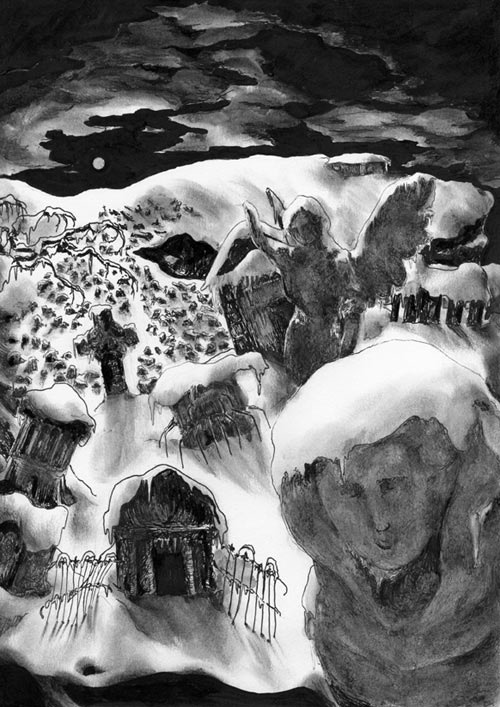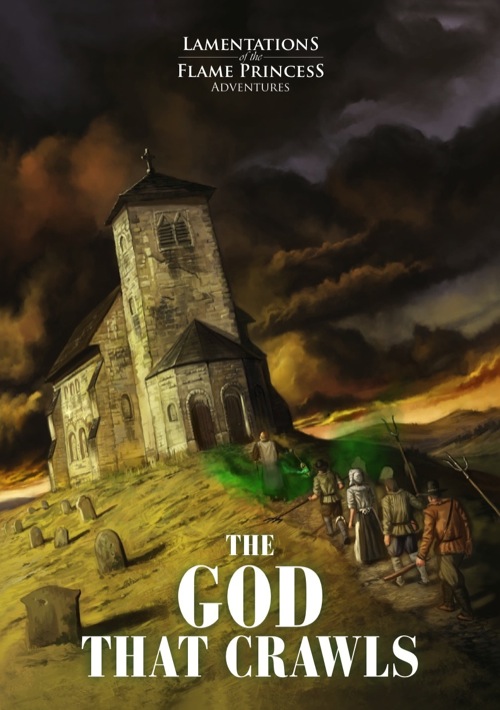Free
RPG Day in 2012 was a cool day altogether, with
some impressive goodies like a cool poster-sized map of Hârn, but the coolest of the many bennies
rpg companies had to pass onto their fans and potential fans was the Free RPG Day module from Goodman Games. Why? Because
it contained two seriously kick-ass adventures, and because it contained a
contest that will net someone out there $1,000 and the chance to see their adventure
in print.
Now, the contest entry date is almost upon
us as I write this, so that isn’t going to be the reason most folks pick up
this module (in pdf format) going forward, so let’s look at the
adventures! The two adventures in the
module are The Jeweller Who Dealt in Stardust, by Harley Stroh, and The
Undulating Corruption, by Michael Curtis.
Need I say that spoilers will follow? They will.
Don’t read on if you don’t want to read them.
.
.
.
.
.
.
.
.
.
.
If you have read my previous reviews, you
know by now that I don’t think Harley
Stroh could write a bad adventure if he tried to. Certainly here has tried to write a great
adventure. The Jeweler Who Dealt in Stardust
is for 3rd level characters, and is a city-based adventure wherein
the characters attempt a heist in the home of a jeweller known to be a fence
for the thieves’ guild. Nothing could go
wrong with this set-up, right?
I’ve been lucky enough to run this one
twice, once for my home group in preparation for Free RPG Day, and once at Duelling Grounds in Toronto for Free RPG Day. The first time, I ran it using pregenerated
characters culled off the Internet, the second time I used the pregenerated
characters supplied by Goodman Games on their website. In the following, Group A is my home group, and Group
B are the players at Duelling Grounds.
Both times the adventure was a lot of
fun. The basic set-up is that Boss Ogo, a notorious fence for the
Thieves’ Guild of Punjar, who fronts
himself as a jeweler, has gone missing.
His house is closed and locked, with no sign of life therein. For the bold, a fortune in jewels is surely
there for the taking, but it is equally sure that others will be watching the
house, thieves and vultures waiting for their own chance to swoop in and steal
the prize.
There are three (relatively easy) ways into
the house – through a large window on the upper floor, through the sewers and
cellar (Group A), and through a side door protected by a walled garden (Group
B). Within…..well, Fritz Lieber or Robert E.
Howard would be proud of Harley Stroh for what is within. Needless to say, there is enough cool here to
seriously creep-out your characters, and enough encounters that require combat
or cleverness to test 3rd level PCs well.
There is a nice handout illustrating Boss
Ogo’s house from the front, showing all three potential entrances. Group A includes more than a few
outside-the-box thinkers, and they tried the windows on various floors, and
checked the chimney as a potential entryway before settling on the sewers. Of course, these other possible entrances
have been considered by Boss Ogo (through the agency of the author), and entry
there is made practically impossible.
Group B went through the patio, facing Spiders of Ygiiz – a very well realized
monster, with some cool effects that, sadly, I didn’t get to use either time I
ran this adventure. What was notable for
me, when I ran this for Group B, was that a player who had no previous
experience of the Dungeon Crawl Classics
system decided to cast spells not for their primary effect, but for the mercurial magic effect that went along
with it, and in a successful way.
The sewer/cellar entrance, the one used by
Group A, is my favourite, because the way in offers the supreme creepy moment
in the module – three men hang, wrapped in webs, in a place containing
thousands of mundane spiders. The spiders
go in and out of the men’s open mouths, which are all that is uncovered. If you investigate, you discover that they
are wrapped in bandage-like cloths marked with runes dedicated to Ygiiz, and they are still alive.
Do you kill them? Do you not?
Encounters are logically linked together, and what you decide here may
affect what you discover elsewhere. Some
of the encounters are potentially quite brutal.
Others have cool eerie components.
All is not as it seems. Players
who decide to use up their resources inside
the house
At the very end, Ogo’s lieutenant and his
men wait outside for the PCs, prompting
a last fight that is likely to be deadly for PCs who have used up their
resources inside the house. Group A shut themselves back into the house
and took to the sewers. Group B was
strongly considering surrender when I pointed out that, as a one-shot
adventure, they might as well go for glory.
The fight was memorable, and they almost won, but it ended in a
TPK. Still, fun was had by all.
Michael Curtis’ The Undulating Corruption
is a different kind of adventure. In search
of the means to deal with magical corruption, the PCs uncover references to the
Crucible of the Worm, and eventually
uncover its location. Now, as 5th
level adventurers, it is time to remove some of the debilitating corruption
that has afflicted the party wizard. Or wizards. Or elf.
Or elves. Or other characters
foolish enough to make spell checks using 1d10.
Unfortunately, the Crucible is in ruins
when the party arrives, and the very well-conceived Night Worm is on its way toward the nearest population centre. Will the PCs be able to stop it?
The Undulating Corruption is a pretty cool little adventure, despite being fairly linear in
nature. There are some neat monsters to
fight leading up to the Night Worm, and the fight with the Night Worm is one
which the players are likely to remember!
The Night Worm makes use of the strengths of the DCC system, so that
fighting it is not as straight forward as one might expect, and the party may
discover itself loathe to slay the creature too soon.
That some of the party may want to keep the
monster alive long enough to benefit from it, while each round increases the
damage that the party takes (and therefore diminishes their overall chance of
success in defeating it before it reaches a major population centre) is the masterstroke
in this adventure.
The encounters leading up to the “main
event” are flavourful, and help build the proper mood for what is in turns a
terrifying, icky, funny, potentially lethal, and potentially useful final
encounter. Players who “figure out” the
rules of the Night Worm may be well rewarded.
Those who do not will probably pay for their failure with their
characters’ lives. But there is enough
tension between the potential benefits, the damage taken, and the overall
threat to force players to make tough decisions for their characters on a
round-by-round basis.
While I have not run this adventure yet (I
had meant to for Free RPG Day, but the opportunity failed to arise), the
themes, setting, and monsters would mesh very well with the Great City from Purple Sorcerer Games’ Perils of the Sunken City and The
Ooze Pits of Jonas Gralk. There
should be no difficulty in placing this adventure in any campaign setting.













